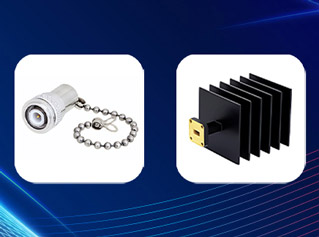-
 Common waveguide components: waveguide terminals
Mar , 18 2025
Common waveguide components: waveguide terminals
Mar , 18 2025
2. Waveguide Terminals 2.1 Performance Characteristics Key electrical parameters include frequency range (determined by waveguide dimensions), VSWR, and input power handling. Physical attributes like size, weight, and material selection (e.g., corrosion-resistant plating) are equally vital. Thermal management strategies vary: 2.2 Materials and Applications A waveguide terminal typically consists o...
View more
-
 5G-Advanced Accelerates New Requirements for In-building RF Infrastructure
Apr , 28 2025
5G-Advanced Accelerates New Requirements for In-building RF Infrastructure
Apr , 28 2025
As 5G-Advanced (5G-A) technology emerges, it brings higher speeds, lower latency, and smarter network capabilities, reshaping expectations for in-building wireless systems. Modern facilities—such as offices, airports, and hospitals—now require more advanced Distributed Antenna Systems (DAS) capable of supporting higher frequency bands and broader bandwidths. Traditional infrastructure must evolve....
View more
-
 Which Is Better: Directional Coupler or Tapper?
May , 08 2025
Which Is Better: Directional Coupler or Tapper?
May , 08 2025
In RF and microwave systems, power distribution is a critical aspect that directly impacts system performance, reliability, and design flexibility. Two of the most commonly used passive components for signal splitting and power monitoring are directional couplers and tappers. While they serve similar purposes in many systems, they differ significantly in structure, application, and performance. Un...
View more
-
 What Is an RF Attenuator and Why It Matters in RF Systems
May , 21 2025
What Is an RF Attenuator and Why It Matters in RF Systems
May , 21 2025
In the world of wireless communications, signal integrity and system protection are paramount. An RF attenuator plays a crucial role in both areas. Whether you’re working in a lab environment, designing a base station, or setting up an indoor DAS system, RF attenuators help manage signal strength and ensure long-term reliability. What Is an RF Attenuator? An RF attenuator is a passive component de...
View more
-
 What Is the Difference Between a Power Divider and a Power Splitter?
Jun , 18 2025
What Is the Difference Between a Power Divider and a Power Splitter?
Jun , 18 2025
1. Basic Function — What Do They Both Do? At a high level, both power splitters and power dividers are passive RF components designed to: Take one input signal Split it into two or more output signals Maintain specific impedance (typically 50Ω or 75Ω) Preserve signal integrity as much as possible These devices are commonly used in test setups, antenna feeds, distributed antenna systems (DAS), and ...
View more
-
 What's the Difference Between Microstrip and Cavity Power Dividers?
Jun , 26 2025
What's the Difference Between Microstrip and Cavity Power Dividers?
Jun , 26 2025
1. What Is a Microstrip Power Divider? A microstrip power divider is fabricated using PCB (printed circuit board) technology. It typically consists of microstrip lines, branch networks, and resistors. Often based on Wilkinson design principles, microstrip dividers offer good impedance matching and moderate port isolation. Key Features of Microstrip Power Dividers: Compact and lightweight — Ideal f...
View more
-
 Key Trends Driving the RF Industry Forward
Jul , 26 2025
Key Trends Driving the RF Industry Forward
Jul , 26 2025
The RF industry is experiencing rapid growth as new technologies and applications reshape the market. With the global demand for faster, more reliable wireless communication, RF components have become more critical than ever. 5G and Beyond The global rollout of 5G networks has significantly boosted the demand for RF components such as power splitters, couplers, and antennas. In addition, research ...
View more
-
 Optimizing Passive Components for Better 5G DAS Coverage
Aug , 13 2025
Optimizing Passive Components for Better 5G DAS Coverage
Aug , 13 2025
With the rapid deployment of 5G in indoor environments, Distributed Antenna Systems (DAS) have become a critical solution to ensure reliable signal coverage. Although passive RF components in DAS are non-powered, their performance directly affects signal transmission quality and overall system stability. Selecting and optimizing these passive components is key to enhancing indoor 5G network covera...
View more
 Common waveguide components: waveguide terminals
Mar , 18 2025
Common waveguide components: waveguide terminals
Mar , 18 2025